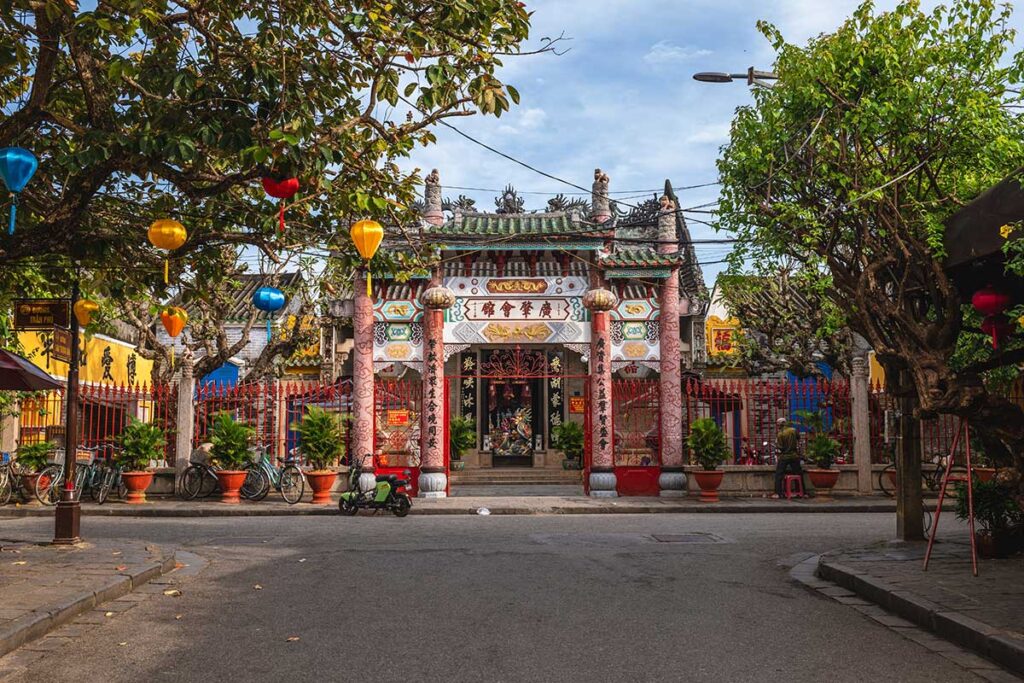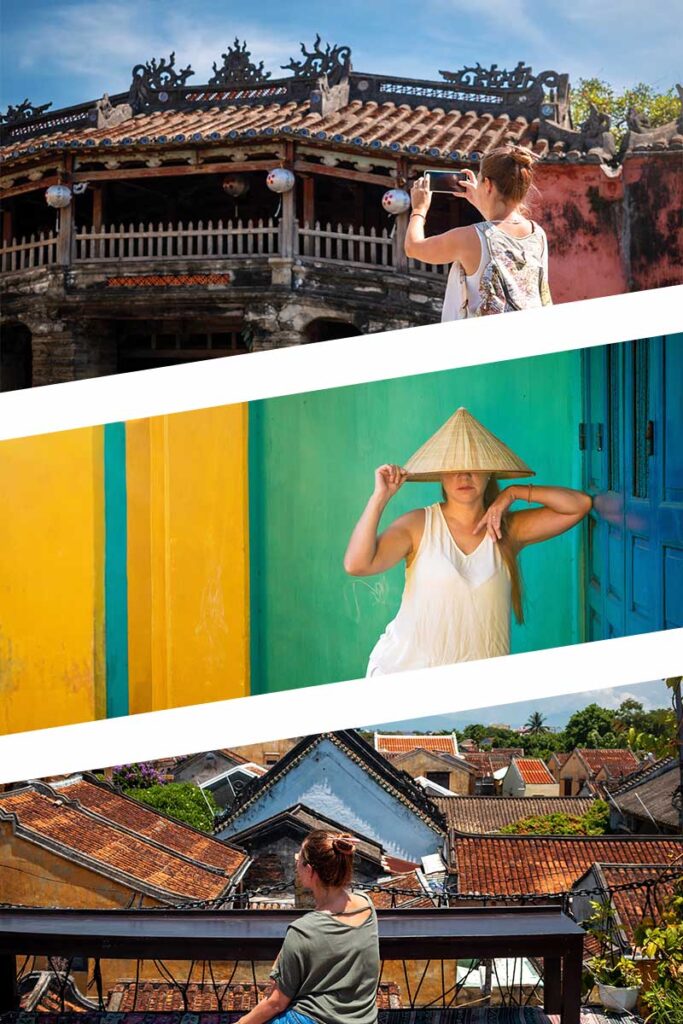What is the Cantonese Assembly Hall?
The Cantonese Assembly Hall served as both a spiritual and social center for the Cantonese Chinese community who settled in Hoi An during its time as a major trading port. Like other assembly halls in the city, it was built by merchants from a specific region in China—in this case, Guangdong (Canton)—as a place to worship their deities, support fellow traders, and preserve cultural traditions.
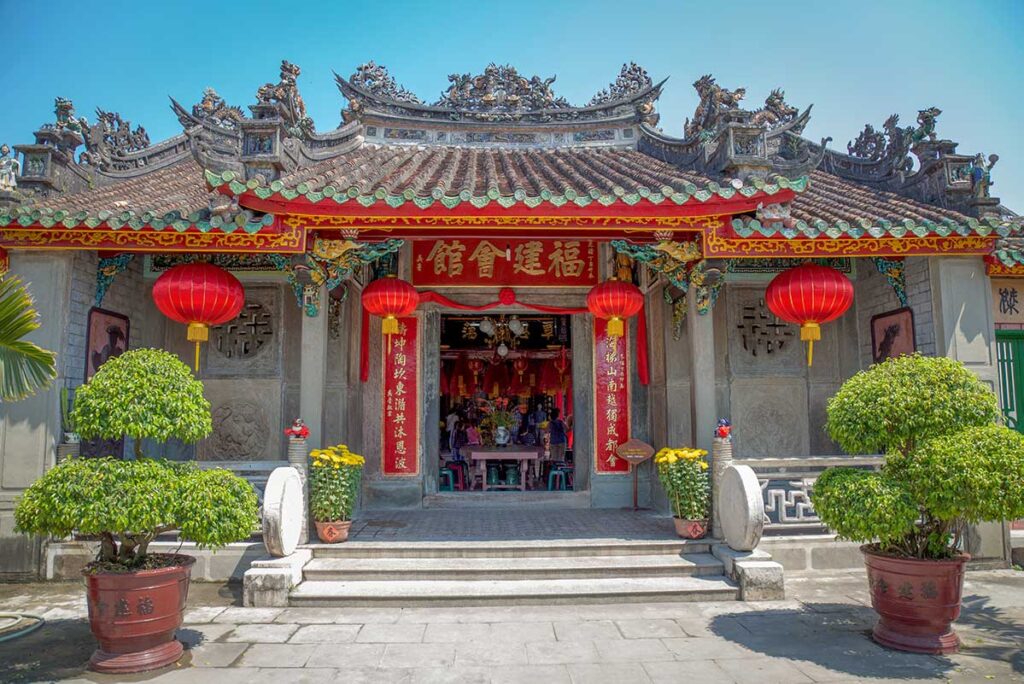
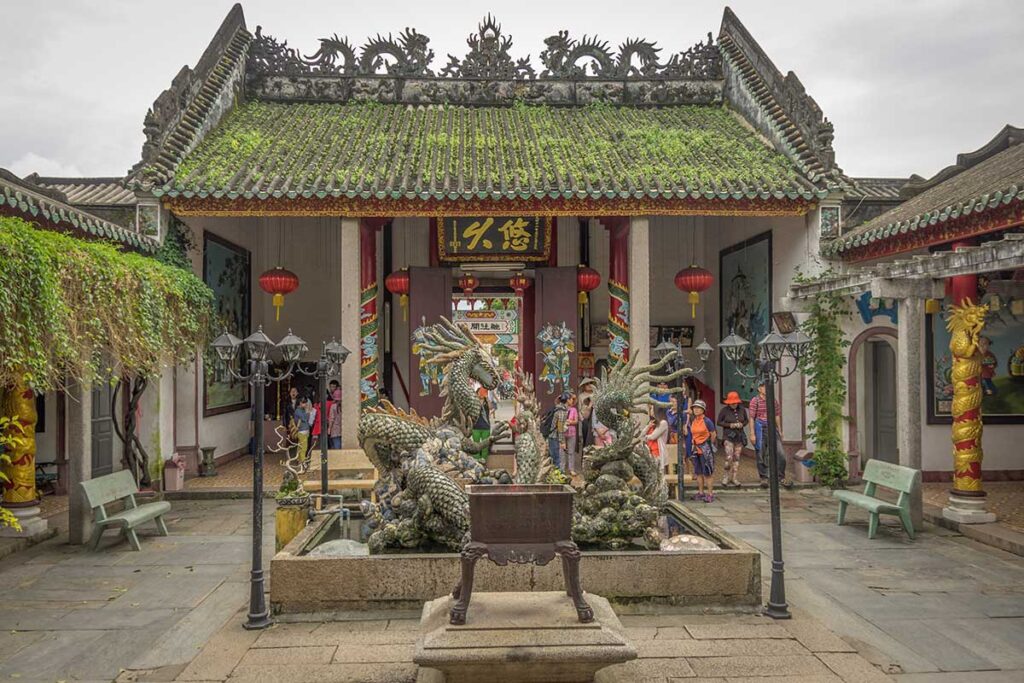
Originally dedicated to Mazu (the sea goddess) and Confucius, the hall later shifted focus to Guan Yu (Quan Cong), the revered Chinese general symbolizing loyalty and strength. Today, it remains one of the most visited and iconic of Hoi An’s five Chinese assembly halls.
Hoi An Walking Tour by Local Guide
- Experience Explore Hoi An’s Ancient Town with an expert local guide and insider stories.
- Includes Market visit, traditional house, colorful temples, and coffee break by electric car.
History of the Cantonese Assembly Hall
The Cantonese Assembly Hall (also known as Quang Dong or Quang Trieu Assembly Hall) was established in 1885 by Cantonese merchants from Guangdong province. At the time, Hoi An was a thriving international port, and Chinese communities built assembly halls as both religious centers and meeting places. Originally, this hall was dedicated to Mazu (Thiên Hậu), the goddess of the sea, and Confucius, reflecting the spiritual priorities of seafaring traders.
In 1911, the focus of worship shifted to Guan Yu (Quan Cong)—a legendary general symbolizing loyalty, integrity, and protection. Alongside religious functions, the hall played a key role in organizing business networks, cultural events, and mutual aid among Cantonese merchants.
Over the years, the hall has undergone preservation efforts and remains a protected heritage site, maintaining its historical role as a spiritual, cultural, and architectural landmark within Hoi An Ancient Town.
Highlights & Architecture
The Cantonese Assembly Hall is one of the most visually striking Chinese structures in Hoi An. It showcases classic Cantonese architectural features, including bold colors, symbolic carvings, and intricate roof designs. The layout follows traditional feng shui principles, with a sequence of gate, courtyard, halls, and rear altar, all richly decorated and well preserved. Here are the main highlights to look out for:
1. Tam Quan Gate

The front gate features the three-arch (tam quan) layout, symbolizing Heaven, Earth, and Humanity. It’s adorned with detailed stone carvings of dragons, phoenixes, and guardian lions, designed to ward off evil and welcome good fortune. This gate sets the tone for the spiritual space inside.
2. Courtyard & Dragon Fountain
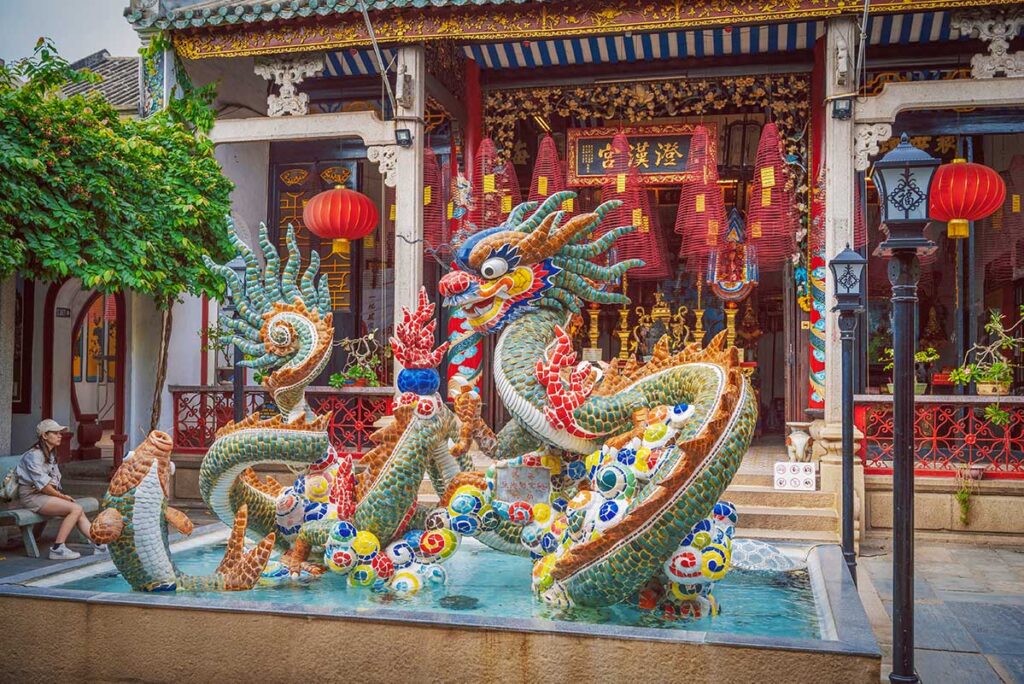
Inside, the courtyard is a peaceful garden lined with bonsai trees and ornamental plants. At its center stands a fountain with a dragon sculpture, representing the legend of the “carp leaping over the dragon gate”, a symbol of perseverance and success in Chinese folklore.
3. Main hall & Altars
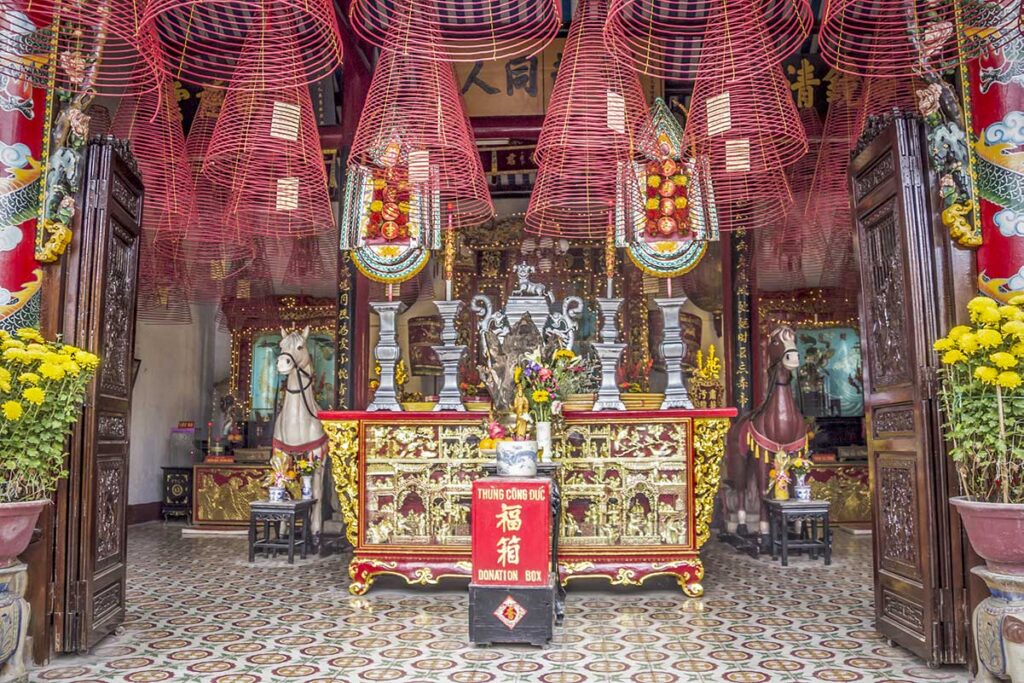
The spacious main hall houses multiple altars. The central altar is dedicated to Guan Yu (Quan Cong), along with his loyal mount Red Hare. Flanking altars honor the God of Earth (Phước Đức Chính Thần) and the God of Wealth (Tài Bạch Tinh Quân)—reflecting the spiritual concerns of merchant communities.
4. Backyard & Guan Yu Portrait
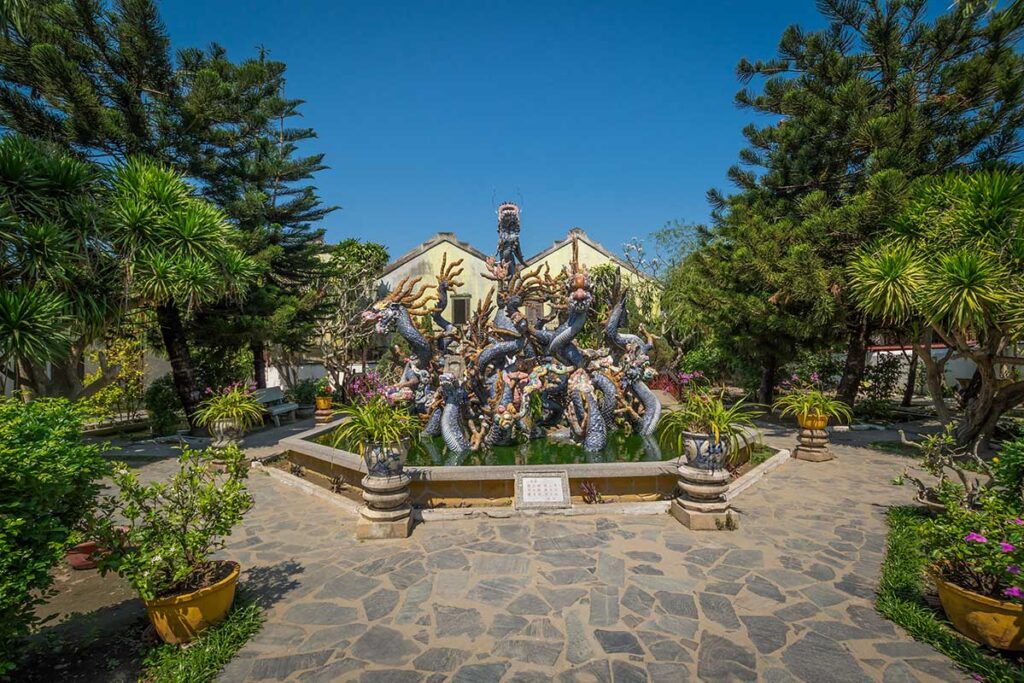
At the rear of the hall is a quieter backyard area, where you’ll find a large portrait of Guan Yu and additional sculptures.
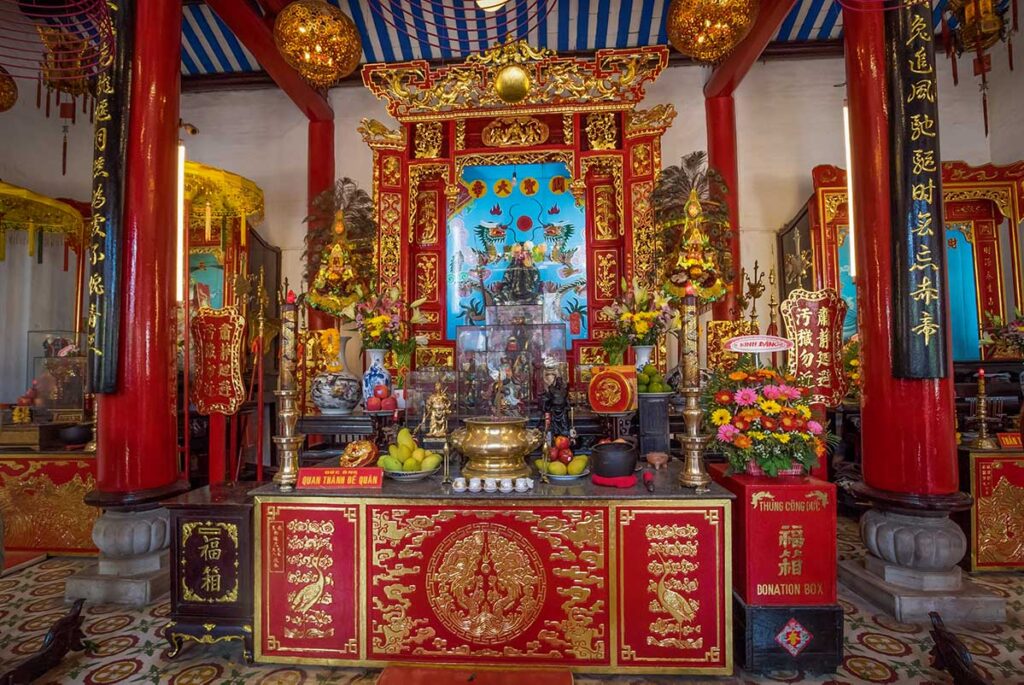
It’s a reflective space that contrasts with the busier front areas, ideal for a short break during your visit.
5. Precious artifacts
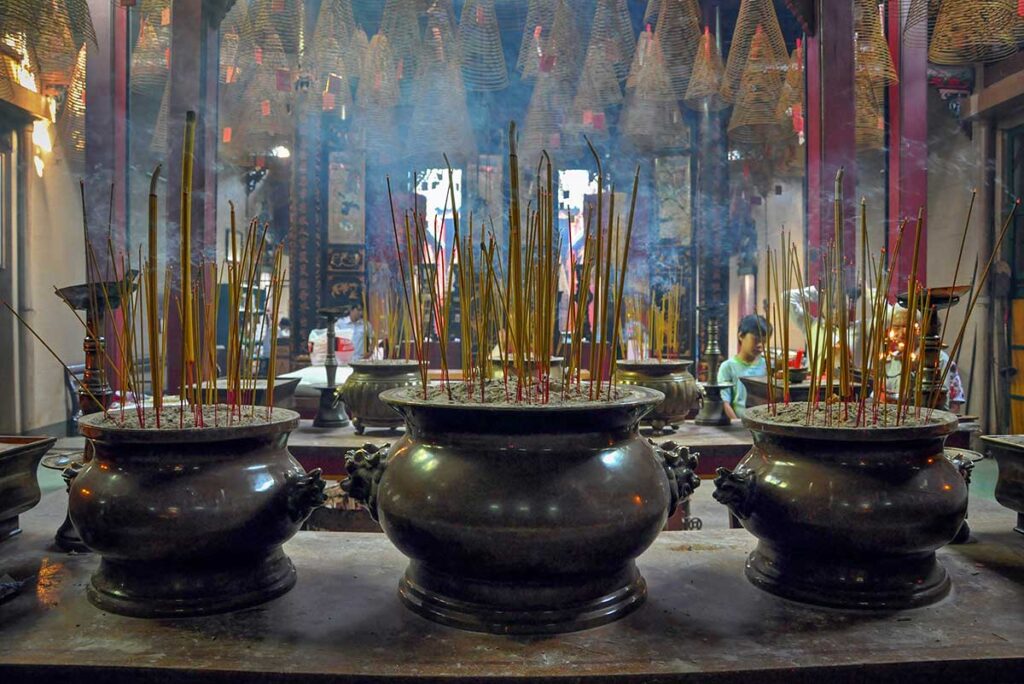
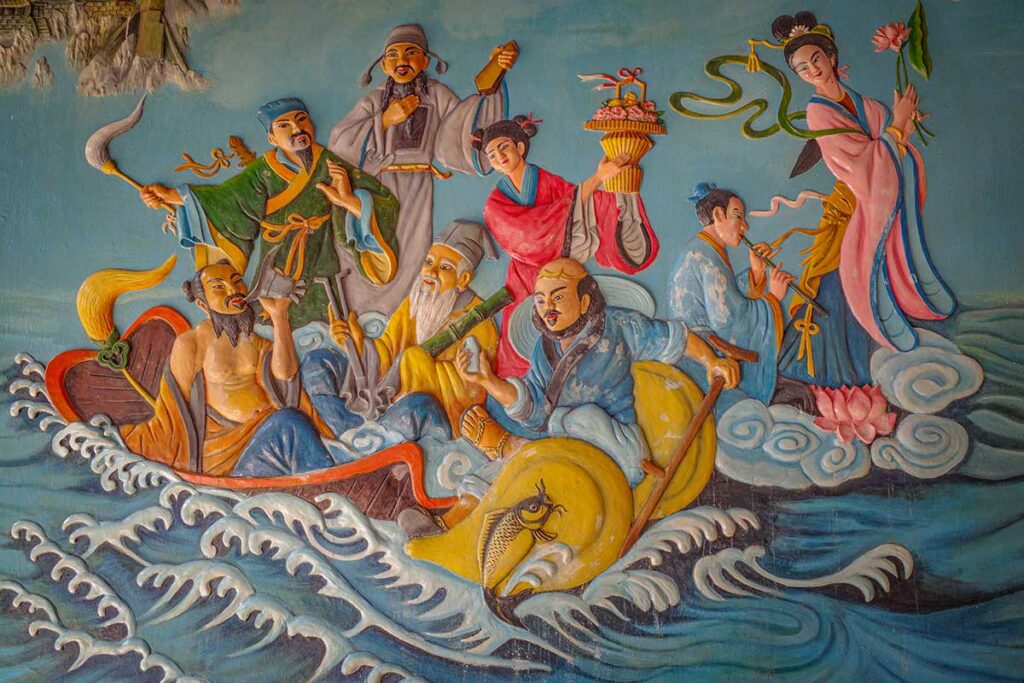
Throughout the hall are historic relics including Chinese celadon porcelain, a 1.6-meter-high bronze incense burner, paintings, and lacquered boards inscribed with calligraphy. These pieces offer a glimpse into the cultural richness and craftsmanship of the Cantonese community.
6. Festivals & Ceremonies
The hall remains a vibrant religious site, hosting events such as the Lantern Festival (Tết Nguyên Tiêu) during the first full moon of the lunar year and the Guan Yu Birthday Festival on the 24th day of the 6th lunar month. Expect incense offerings, traditional rituals, and festive decorations during these times.
Location & visiting information
Opening Times
The Cantonese Assembly Hall is open daily from 8:00 AM to 5:00 PM.
Entrance fee
Entry is included in the Hoi An Ancient Town ticket (120,000 VND), which allows access to 5 sites, including 3 assembly halls of your choice. Choose wisely if you plan to visit multiple halls.
Where is it?
The hall is located at 176 Tran Phu Street, right near the Japanese Covered Bridge, making it one of the first major landmarks you’ll encounter on a walking tour of the Ancient Town.
How to get there
Simply follow the Tran Phu Street route starting from any of the main entrances to the Old Town. The assembly hall is part of the main sightseeing loop, and easily accessible on foot within a few minutes’ walk.
Tips for visiting
- Visit mid-morning or early afternoon when the light is good for photos and crowds are manageable.
- Respect photography rules — some areas may have signs requesting no flash or no photos.
- Don’t touch artifacts or step on thresholds; these are considered sacred in Vietnamese and Chinese tradition.
- This hall makes an ideal stop after visiting the Japanese Covered Bridge — it’s just a short walk away.
- Combine your visit with other nearby halls like Phuc Kien (Fujian) and Hai Nam Assembly Hall for a deeper cultural walk.
Is it worth visiting?
Yes — especially if you’re interested in architecture, history, or Chinese cultural heritage. The Cantonese Assembly Hall is one of the most striking and well-preserved halls in Hoi An, with rich symbolism, bold design, and a peaceful layout.
Because of its location near the Japanese Bridge, it can get busy, but it’s still very manageable and worth your time. If you’re only visiting two or three assembly halls, this one — along with the Fujian Assembly Hall (Phuc Kien) — should be high on your list.
Other Assembly Halls in Hoi An
While the Cantonese Assembly Hall is one of the most impressive, there are several other Chinese assembly halls worth visiting in Hoi An:
- Phuc Kien Assembly Hall (Fujian) – The largest and most famous hall, dedicated to Mazu, the sea goddess. Known for its vibrant colors, intricate carvings, and central role in Hoi An’s Chinese heritage. Read more about the Phuc Kien .Assembly Hall
- Hai Nam Assembly Hall – A quieter hall with deep historial meaning, built to honor 108 Hainanese merchants who were wrongfully killed. Peaceful atmosphere and unique story. Read more about the Hai Nam Assembly Hall .
- Trieu Chau Assembly Hall (Teochew) – Known for its elaborate woodwork and dedication to the god of waves and wind. A bit smaller, but highly decorative and close to the riverfront. Read more about the Trieu Chau Assembly Hall .
- Trung Hoa Assembly Hall (Ngu Bang) – A shared hall for five different Chinese communities. The only blue-painted hall, with a unique layout and a calm courtyard. Read more about the Trung Hoa Assembly Hall.
